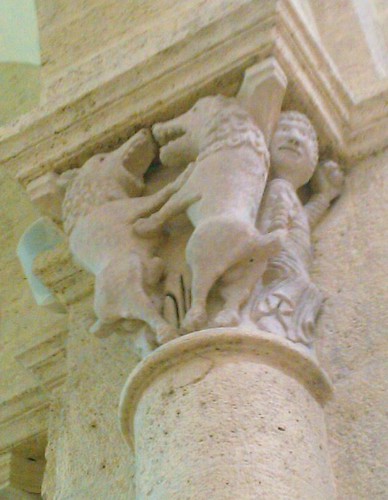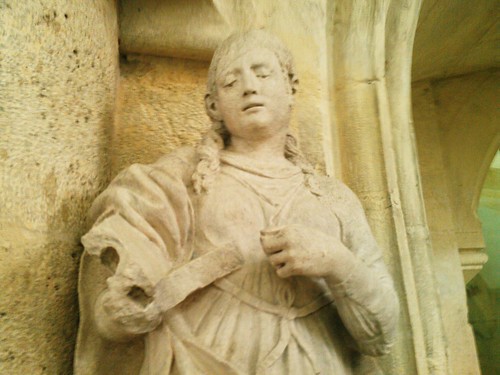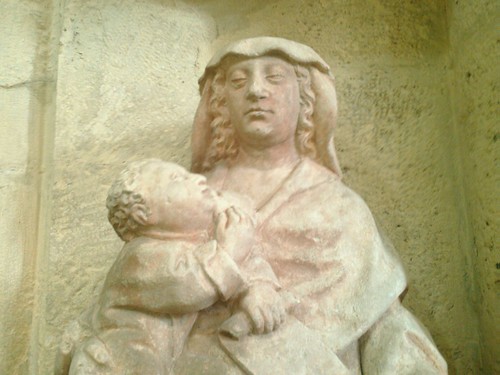Badly in need of a little rest and recreation, I’ve spent most of today pottering around with the potplants (the potatoes have finally taken off), cleaning the kitchen (badly overdue – and I’d recommend never, never getting the sort of benchtop that you have to oil), doing the ironing, and watching a bit of what I gather is BBC4’s medieval season on iPlayer. Through that I was introduced to Alice Chaucer, who’s certainly quite a character in her own right. That was her maiden name, but since she went through three husbands its rather hard to keep up with all of her titles.
She was the granddaughter of that other Chaucer, a rich woman in her own right by her maturity and a major political player at court. In short from the ODNB:
Alice Chaucer grew to be an extremely wealthy widow through her parents (from whom she inherited in 1437), her three valuable marriages, and her own policy of buying up land during her last long widowhood. By these means she accumulated estates in twenty-two counties, from three of which in 1454 she received an income of £1300. She was wealthy enough to be a crown creditor in 1450 and in the 1460s. That her lifestyle was fairly lavish and that she was something of a literary patron, notably of an old Chaucer friend, John Lydgate, are substantiated by the inventory of her goods and books made in 1466 when she left East Anglia and came home to Ewelme.
And the presenter was wandering around what I gather was this still surviving almshouse, (picture):
On 3 July 1437 the couple were licensed to found an almshouse at Ewelme, called God’s House, for two chaplains and thirteen poor men and by 1448, when the statutes were drawn up, they had added a grammar school.
A quick search suggests there isn’t a biography – definitely a subject that deserves an author, I’d suggest…



![IMAGE_028[1]](http://farm4.static.flickr.com/3171/2500581804_46053ebac4.jpg)
![IMAGE_027[1]](http://farm3.static.flickr.com/2224/2499752521_afae2821fb.jpg)

 About
About